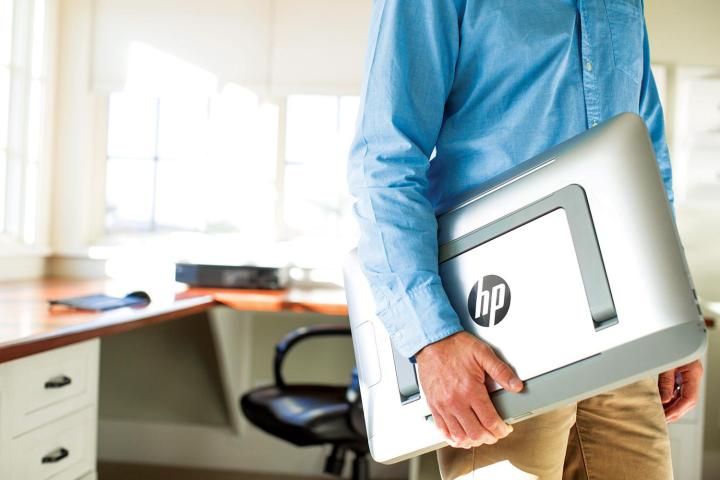
Late last year, at Berlin’s IFA consumer electronics conference, Sony debuted a strange new PC called the Sony Vaio Tap 20. Though possessing the display size and self-supporting stand of an all-in-one computer, the Tap also offered a built-in battery, effectively making it a plus-size tablet.
These devices seem more like a cynical ploy designed to capture people who simply want something bigger than what the next guy has.
These all-in-one/tablet crossovers are built on a very basic principle: bigger is better. If a 10-inch display is nice, why not have 20 inches instead? Of course, reality is not so simple, and after reviewing several such crossovers I’ve concluded consumers should stay away. Here’s why…
Physics wins again
One of the first lessons every waiter or waitress learns is to carry a tray by placing a hand underneath its center, and then lifting up. This works best because it aligns the server’s hand with the tray’s center of mass. Attempting to grab a tray from an edge, on the other hand, creates torque that makes even a few pounds of weight very difficult to carry.
Tablets, like trays, are large and flat, so the same situation occurs. The Dell XPS 18 only weighs about 5.5 pounds, but when a user tries to pick it up from an edge, it feel as if it weighs several times more, making the device harder to use than its specifications hint. The larger a tablet is, the more severe this problem becomes.
Of course, users might try to counteract physics by holding a tablet as a servers hold a tray: in the center. But while this is easy when standing, it’s much harder to do while sitting or lying down with a tablet.
The natural, comfortable position is to hold the device by one edge while manipulating it with the other. Trying to wrap an arm around to hold a tablet from the center is often less comfortable, and, ironically, it becomes more and more difficult as the size of the device increases. Palming a Nexus 7 is possible for many people, but no one can do the same with the Envy Rove 20.
Too close for comfort
Tablets have become renowned for their amazing pixel density. The Amazon Kindle Fire HD packs in 254 pixels per inch, the iPad boasts 264ppi, and the new Nexus 7 beats both with an amazing 323ppi. Phones are also in the game, with flagship products offering a pixel density above 400 pixels per inch.

PC all-in-one/tablet crossovers, however, have decided to just sit on the sidelines. Dell’s XPS 18 leads the pack with a mere 122ppi and others, like the HP Envy Rove and Sony Vaio Tap, have less than 100ppi. The impact of this is instantly apparent. Unlike “real” tablets, which boast buttery-smooth reproduction of the smallest details, the gigantic imitators suffer from chunky text, fuzzy media, and visible pixels.
The last nail in the coffin of these modern dinosaurs is the awful battery life.
Losing the charge
The last nail in the coffin of these modern dinosaurs is the awful battery life that plagues them. One might think that a huge device could pack a bigger battery, but with cost and weight being a concern, these products usually end up shipping with internal batteries no larger than an average Ultrabook.
That’s a problem, because big tablets have big displays, and a big display needs a more powerful backlight to reach a given brightness. Our review of the Dell XPS 18, for example, found that it consumed 22 watts at idle, while the newer and less powerful HP Envy Rove 20 ate up at least 11 watts.

Neither figure is outlandish, but the very latest Haswell Ultrabooks consume 7 or 8 watts at idle. As we’ve seen, just a few extra watts of power drawn by the display can hamper endurance. The XPS 18 came short of four hours and 30 minutes in our least strenuous battery test, and the Rove lasted a full hour less. That doesn’t cut it in a world where both tablets and laptops regularly offer ten hours of endurance (or more)!
Just say no to big tablets
I suspect that all-in-one/tablet crossovers are a product of marketing rather than engineering. Did a group of people sit down and decide, after a careful study of how consumers use PCs, that what people really need is a 5-pound tablet? Probably not. These devices seem more like a cynical ploy designed to capture people who simply want something bigger than what the next guy has. Consider them the PC equivalent of a 70-inch off-brand television. They’re big – but an even bigger waste of money.
Images via Florian Plag/Flickr and PC Pro.




